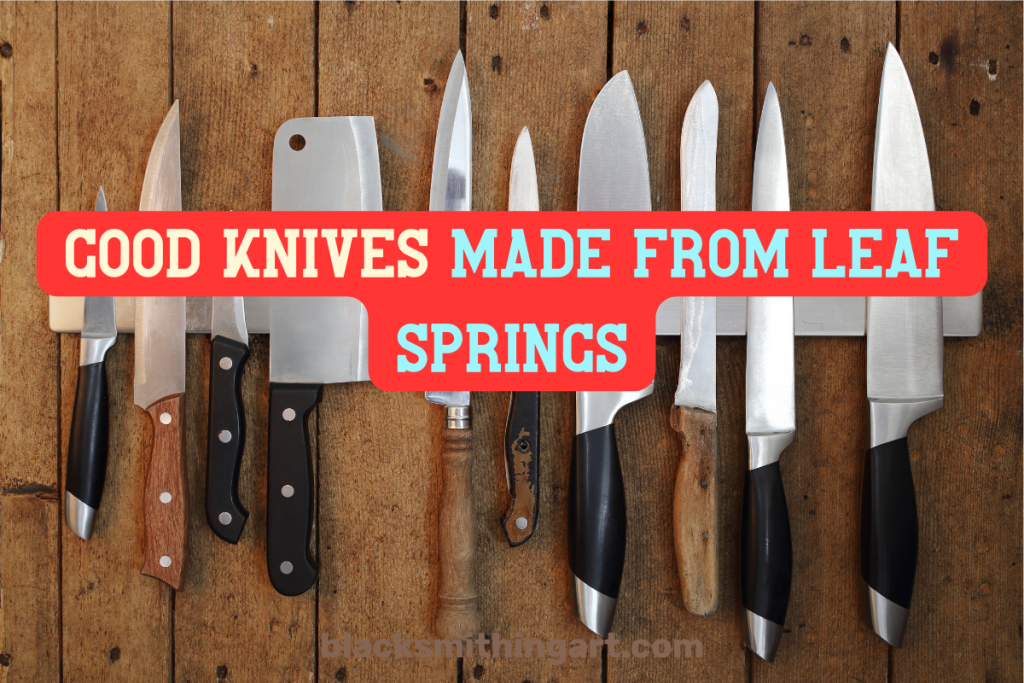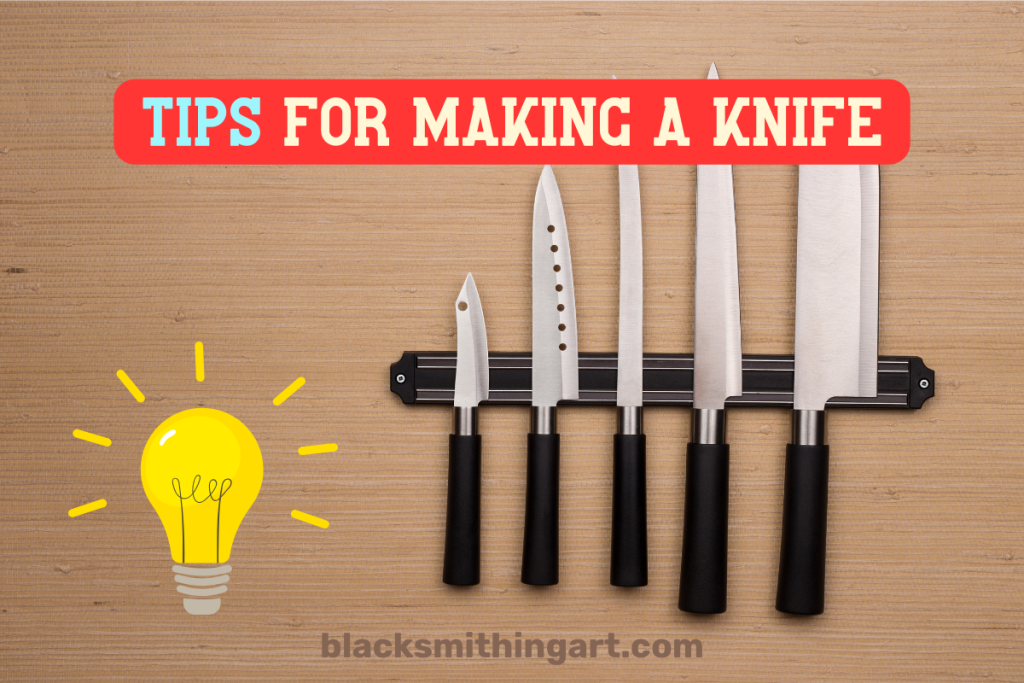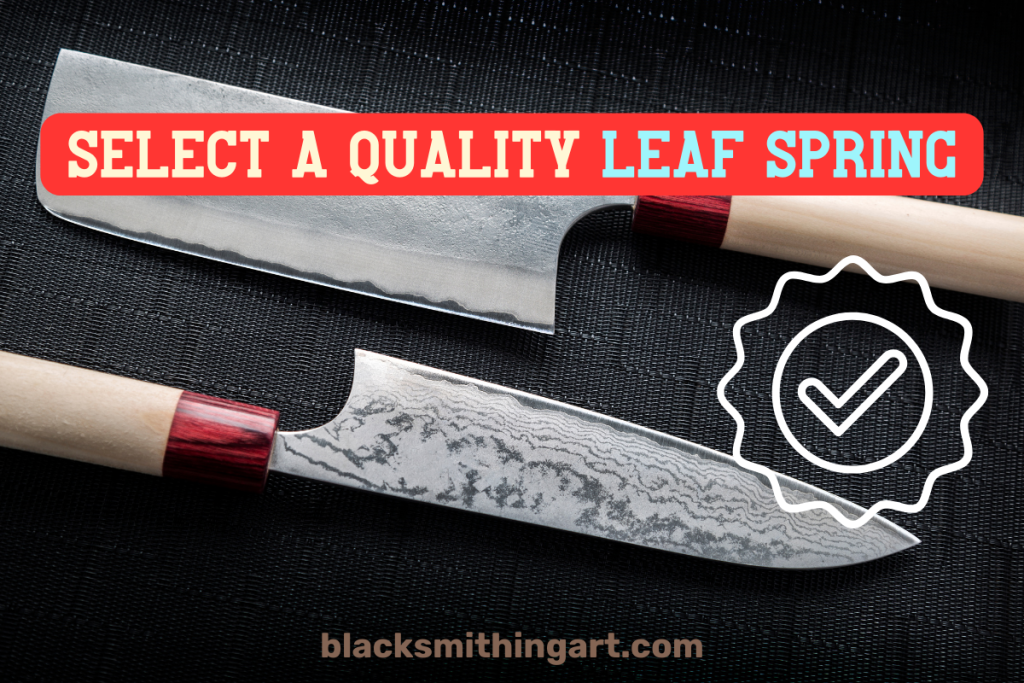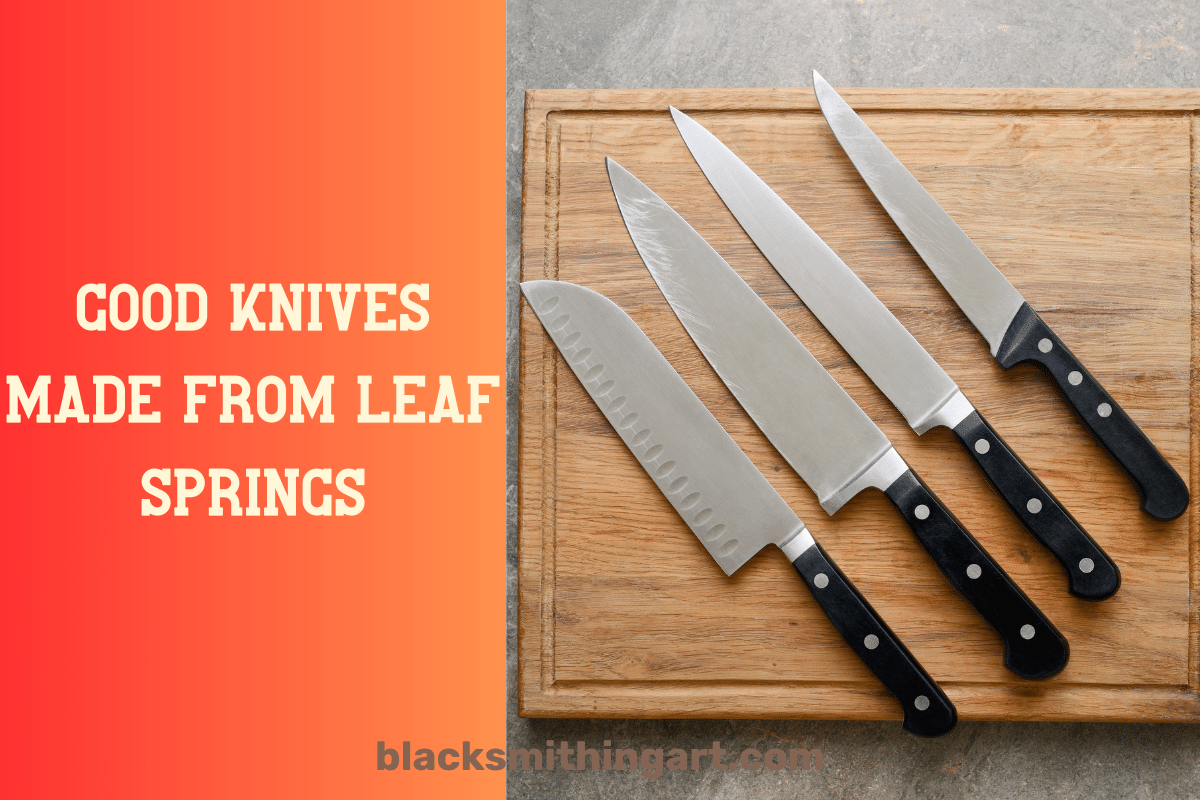
In the world of blacksmithing, there are endless materials that can be turned into the blade. These include wood, steel, and bone, as well as unconventional materials such as leaf springs from cars and trucks.
Knives made from leaf springs are an art that combines tradition and uniqueness, and in this article, we’ll take a look at how these amazing products are created.
Contents
The history of knives made from leaf springs in blacksmithing

The use of leaf springs for knife-making has a long history. In the early 20th century, when automobiles were just beginning to take over the world of the road, blacksmiths were looking for ways to use spare vehicle parts, including leaf springs, to create a reliable and durable knife. These springs were made of high-carbon steel, making them ideal for blacksmithing.
Over time, blacksmiths developed techniques to process and shape the leaf springs, turning them into quality edges. Today, this method continues to evolve and is becoming increasingly popular among knife collectors and connoisseurs of a good sharp knife.
Advantages of using leaf springs

Knives made from leaf springs has several distinct advantages:
- Strength and stability. Leaf springs are usually made from hardened steel, which makes them particularly strong and resistant to stress. The knife made from such material can last for many years without losing its functionality.
- Unique look. One of the main features of a knife crafted from leaf springs is its unique appearance. Through the forging function, each blade takes on its pattern and texture, making each knife a truly unique work of art.
- Historical value. The use of spring leaves to create a blade dates back to the past, and this knife often has a high historical value. They can be part of collections and become a point of interest for historians and antique dealers.
- Environmentally friendly use of material. Recycling old files into the knife is an environmentally friendly technique that helps reduce waste and recycle materials. The method of creating a knife from spring leaves.
Why leaf spring is the ideal choice for crafting a blade?

There are several reasons to choose leaf springs for knife making:
- High carbon content. Most leaf springs are typically made from hardened steel. Hardened steel content is desirable in knife making because it allows the blade to be hardened, resulting in excellent edge retention and sharpness.
- Durability. Leaf spring steel is known for its toughness and durability. It can withstand significant stress and maintain its integrity, making it a reliable choice for a knife.
- Resilience. A knife created from leaf spring steel is less prone to chipping or breaking, which is important for the knife subjected to heavy use, such as hunting or survival blade.
- Cost-effective. Leaf springs can often be acquired at a relatively low cost or even for free from old vehicles, making them an affordable option for knife makers.
- Recycling and sustainability. Repurposing spring leaves for knife making is a sustainable practice that recycles old materials and reduces waste, which can be appealing to environmentally conscious individuals.
- Historical significance. The use of leaf springs for knife making has a long history, and some people appreciate the historical and traditional aspects of this craft.
- Unique appearance. A blade created from spring leaves often has a unique and attractive appearance due to the forging and heat-treat processes, which can create distinctive patterns and textures on the blade.
Leaf spring steel is chosen for knife making because of its excellent steel properties, including carbon content, durability, and resilience. Additionally, the accessibility and cost-effectiveness of spring leaves make them an attractive choice for both amateur and professional knife makers.
The process of creating a blade from leaf spring

Knife-making from spring leaves is a complex method that requires certain skills and tools.
Here are the basic steps of the function:
- Material selection and preparation. Old spring leaves must be carefully selected and cleaned of rust and dirt. They are then cut into suitable pieces for the tools.
- Forging. The spring pieces are subjected to forging. They are heated and repeatedly kneaded, which gives the edges the desired shape and hardness.
- Sharpening and finishing. The edge is then sharpened, and grind. Take these steps on one and the other side. This includes creating handles, applying patterns and textures to the edges, and finishing to give the edges a unique look.
- Heat treatment. The edge is put through heat-treating to achieve the desired hardness and toughening.
- Hand sharpening. After all processing steps are completed, the edge is carefully sharpened and tested for sharpness. Do this with other knives.
Tips for making a knife

Here are some tips for making a knife.
Select a quality leaf spring

Choose a leaf spring from a reputable source or an old vehicle. Look for one in good condition with minimal rust or pitting. The steel should be high or medium carbon for optimal knife quality.
Safety first

Always wear appropriate safety gear, including eye protection, gloves, and hearing protection when working with hot metal and heavy equipment.
Cutting the blade
Use a cutting tool or angle grinder to cut the leaf spring to the desired length and shape. Ensure the blade is symmetrical and free of any cracks or defects.
FAQ
Can you make a knife out of a leaf spring?
Yes, you can make a knife out of a leaf spring. Leaf springs, which are commonly found in vehicles, are a popular source of high-quality steel for crafting tools.
Is leaf spring steel good for knives?
Leaf spring steel is generally considered good for edges.
It is known for its durability, toughness, and the ability to hold a sharp edge when properly heat-treated and forged by skilled blacksmiths.
Is car spring steel good for knives?
Spring steel, including leaf spring steel, is often an excellent choice for making knives. The medium-carbon steel used in a leaf spring provides excellent hardness and strength for a knife.
The quality of the knife ultimately depends on the skill of the blacksmith and the heat treatment method.
Do leaf springs make good swords?
While a leaf spring can be used to make good swords, the suitability of a leaf spring for sword making depends on its size and shape, as well as the skill of the blacksmith.
Dedicated swordsmiths often use specialized sword steels for the shapen swords to ensure optimal performance.
Conclusion
Blade making from leaf spring is a unique combination of tradition and blacksmithing.
Their outstanding durability and appearance make them a desirable object for collectors, practicing cooks, and hunters alike.
Thanks to the skillful hand of the blacksmith, old springs take on a new life in the form of a beautiful knife that will delight its owners for many years to come.


